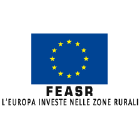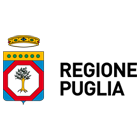A “State aid” is an advantage (in any form whatsoever) granted by the State or through State resources to entities engaged in economic activities on a given market, which confers on them an advantage capable of affecting internal trade and of distorting or threatening to distort competition. There are four conditions that an aid measure must fulfil in order to qualify as State aid within the meaning of Article 107(1) of the Treaty on the Functioning of the European Union (TFEU):
- state origin of the aid: financial transfers may take different forms (grants, interest rate reductions, capital injections, etc.), and come from resources of national, regional and local budgets, as well as from public and private banks or intermediaries entrusted by the State with the management of a public aid scheme;
- economic advantage: the aid measure must confer on the recipient firm an economic advantage which it would not have obtained in the normal course of its business;
- presence of a selective advantage: in order to constitute State aid, the measure must not be general or indiscriminate, but selective, i.e. it must apply to a specific economic sector (sectoral aid) or to a specific territory (regional aid);
- effect on competition and trade: State aid must have the potential to affect competition and trade between Member States, since it is intended for a beneficiary exercising an economic activity and operating on a market where there is trade between Member States.
State aid and aid granted through State resources of whatever nature are incompatible with the common market if they distort or threaten to distort competition by favouring certain undertakings or certain production sectors. State aid granted in relation to certain policy objectives is an exception. These include, inter alia, aid for agriculture, fisheries and aquaculture. In particular, aid to make good the damage caused by natural disasters or exceptional occurrences is deemed compatible with the internal market (Article 107(2)(b) TFEU).
More generally, on the other hand, for the agricultural sector, because of its specific features, it is the Treaty itself that provides that the rules on competition are to apply to production of and trade in agricultural (and fishery) products only to the extent determined by the European Parliament and the Council (Article 42 TFEU). It should be specified that the agricultural and fishery products for which the provisions on competition apply are only those listed in Annex 1 to the Treaty (Article 38 TFEU).
In this regard, the Commission has adopted the "EU Guidelines for State aid in the agriculture and forestry sector and in rural areas 2014-2020". (2014/C 204/01) which lays down the conditions and criteria under which aid for the agricultural and forestry sectors and aid for rural areas may be considered compatible with the internal market. The guidelines, in the part referring to the scope of application, make explicit reference to the Rural Development Policy, providing that the rules on State aid do not apply to payments made by Member States under and in accordance with Regulation (EU) No 1305/2013, nor to additional national funding falling within the scope of Article 42 of the Treaty (Articles 81 and 82 of Regulation No 1305/2013).






